
Frederick & Catharine (Koch) Kable, Kessler/Liberty Cemetery, Mercer County, Ohio. (2023 photo by Karen)
This is the tombstone of Frederick and Catharine (Koch) Kable, located in row 12 of Kessler, aka Liberty Cemetery, Mercer County, Ohio. This marker is unusual because the vital information about the individuals is inscribed on the ends of the marker and a verse is inscribed on the front. The marker faces west, Frederick’s inscription is on the south end and Catharine’s inscription is on the north end. The inscriptions:
FREDERICK
Died
Apr. 29, 1886
Aged
68Y. 10M. 17D.
CATHARINE
Died
July 5, 1911
Aged
73Y. 8M. 8D.
MOTHER and FATHER
O, let us think of all they said
And all the kind advice they gave
And let us do it now they are dead
And sleeping in their lonely grave.
KABLE
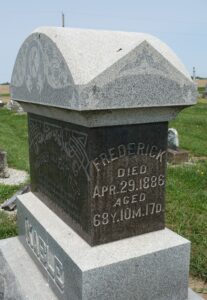
Frederick Kable inscription, Kessler/Liberty Cemetery, Mercer County, Ohio. (2023 photo by Karen)
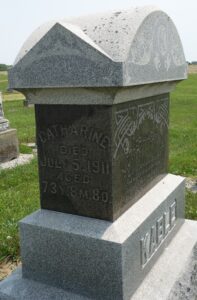
Catharine (Koch) Kable inscription, Kessler/Liberty Cemetery, Mercer County, Ohio. (2023 photo by Karen)
Frederick Kable was born in Fechingen, District Saarbrucken, Kingdom of Prussia, on 10 June 1817, the son of Jean “Christian” Kable (c1782-?) and Catharina Elisabeth (Muller) (c1791-1864).
Frederick Kable immigrated with his parents and brothers Ferdinand, Daniel, and Christian in 1849 on the ship Henrietta, arriving in New York on 8 May 1849. Immigrating with them was the Christian Kessler family. Christian Kessler’s wife Margaretha (Kable) Kessler (1816-1862) was Frederick Kable’s sister.
After immigrating, some of the Kables attended St. Paul Lutheran, Liberty Township, and Zion Lutheran, Chatt.
In 1850, brothers Frederick Kable, 30, and Ferdinand Kable, 25, and Margaret Kable, 50, [relationship unknown] lived in Liberty Township, Mercer County, Ohio. [2]
Frederick Kable’s brother Ferdinand married Catharine Bollenbacher in 1853 and they started their own family.
In 1860 Frederick Kable, 40, single, resided with his mother Catharine Kable, 71, widow, in Liberty Township. They had a Skeels Crossroads post office. [3] Frederick’s mother Catharine [Muller] Kable died 8 January 1864.
About five months later, Frederick Kable married Catharine Koch, married on 2 June 1864 by Rev. George Heintz, the pastor of Zion Lutheran Chatt’s parish. Witnesses to their marriage were Karl Bollenbacher and Barbara Koch.
Catharine (Koch) Kable was born in Trossingen, Wuerttenberg, Germany, 27 October 1837, the daughter of Jacob & Maria (Messner) Koch. She was baptized on 29 October 1837. [4]
One Catharine Koch, born 27 October 1837, applied to emigrate to America in April 1862. [5] I could not find a Catharine Koch of her age enumerated in the 1860 census, so she may have immigrated around 1862.
The Frederick Kable family in 1870: Frederick Kable, 52; Catharine, 33; Jacob, 6; Christina, 3; Frederick, 4 mo. Frederick was a farmer. [6]
The Frederick Kable family in 1880: Frederick, 64; Catharine C, 43; Jacob, 14; Christina, 12; Frederick, 10; and John 2. This enumeration actually notes that Catharine‘s parents were born in Trossingen,which agrees with Zion Chatt‘s records, and that Frederick was born in Rhein-Beiern/Bayern. [7]
Frederick Kable, died in Liberty Township, Mercer County, on 29 April 1886, aged 68 years, 10 months, and 19 days, per Zion Chatt’s records, aged 68 years, 10 months, and 17 days per his tombstone. He was buried on 1 May.
In 1900 widow Catherine (Koch) Kable, 63, head, resided with her four unmarried children Jacob, 35, farmer; Christina, 33; Frederick, 30, farmer; and John, 23, schoolteacher. [8]
In 1910 widow Catharine Kable, 72, resided with her son John Kable, 33, and his family, Viola, 21, wife; Walter, 2, son; and Larena, 3 months, daughter. This enumeration indicates that Catharine (Koch) Kable immigrated in 1862, which agrees with the emigration application information mentioned above. [9]
Catharine (Koch) Kable, died from a stroke on 5 July 1911, aged 73 years, 8 months, and 8 days. She was buried on the 7th. According to church records she was survived by 3 sons, 1 daughter, and 1 sister.
Frederich and Catharina (Koch) had the following children:
Jakob Kable (1865-1946), never married
Christina Kable (1867-1939), married John A. Baumgartner
Frederich Kable (1870-1934), married Mary Ann Wendel
Christian Friedrich Kable (1872-1876)
Katharine Kable (1876-1876)
Johann Heinrich Kable (1877-1957), married Viola L. Baumgartner
[1] New York, U.S., Arriving Passenger and Crew Lists (including Castle Garden and Ellis Island), 1820-1957, ship Henrietta, arrival 8 May 1849; database online, Ancestry.com.
[2] 1850 U.S. Census, Liberty, Mercer, Ohio, p.286a, dwelling & family 7, Fredk Roble [sic]; Ancestry.com.
[3] 1860 U.S. Census, Ohio, Mercer County, Liberty Township, p.359, dwelling 1014, family 1019, Fred Kable; Ancestry.com.
[4] Germany, Select Births and Baptisms, 1558-1898, Catharine Koch, 27 Oct 1837; database on-line, Ancestry.com.
[5] Trudy Schenk, Wuerttemberg, Germany Emigration Index, Katharina Koch, b. 27 Oct 1837, applied Apr 1862; database on-line, Ancestry.com.
[6] 1870 U.S. Census, Ohio, Mercer, Liberty, p.148B, dwelling 105, family 97, Fredrick Kable; Ancestry.com.
[7] 1880 U.S. Census, Ohio, Mercer, Liberty, ED 188, p.473B, dwelling 43, family 45, Frederick Kable; Ancestry.com.
[8] 1900 U.S. Census, Ohio, Mercer, Liberty, ED 85, p.6, dwelling 115, family 120, Catherine Cable [sic]; Ancestry.com.
[9] 1910 U.S. Census, Ohio, Mercer, Liberty, Ed 119, p.3B, dwelling 212, family 219, John Kable; Ancestry.com.
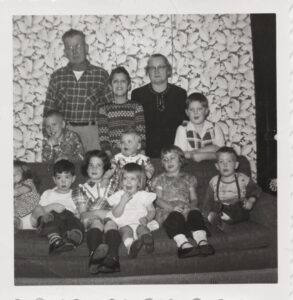
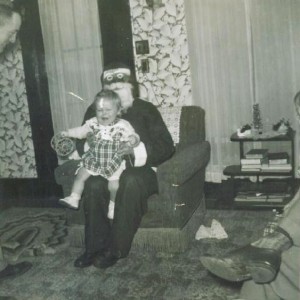
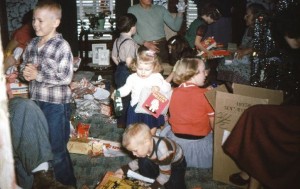
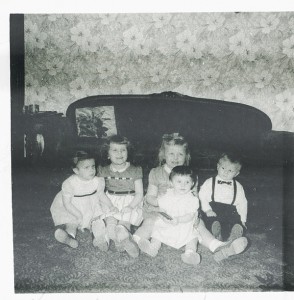
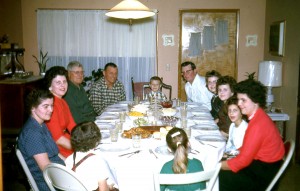
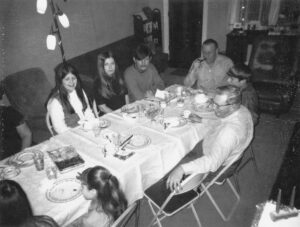
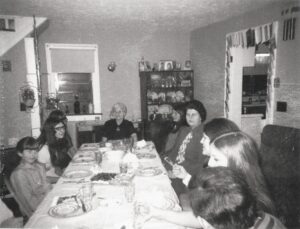
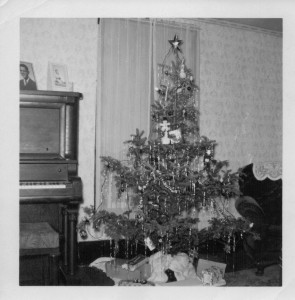

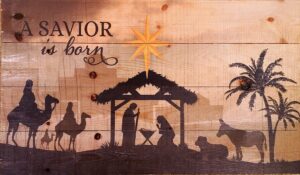
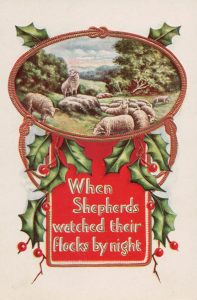
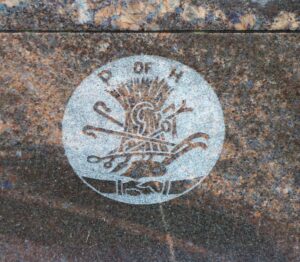
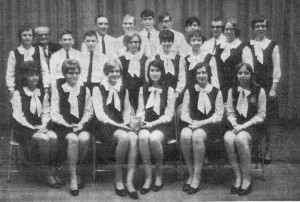
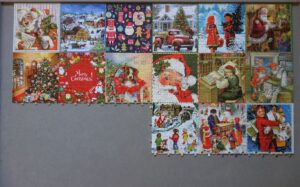
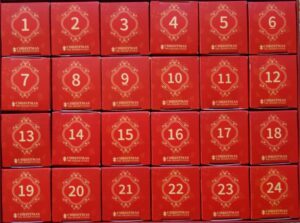
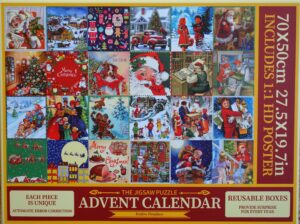



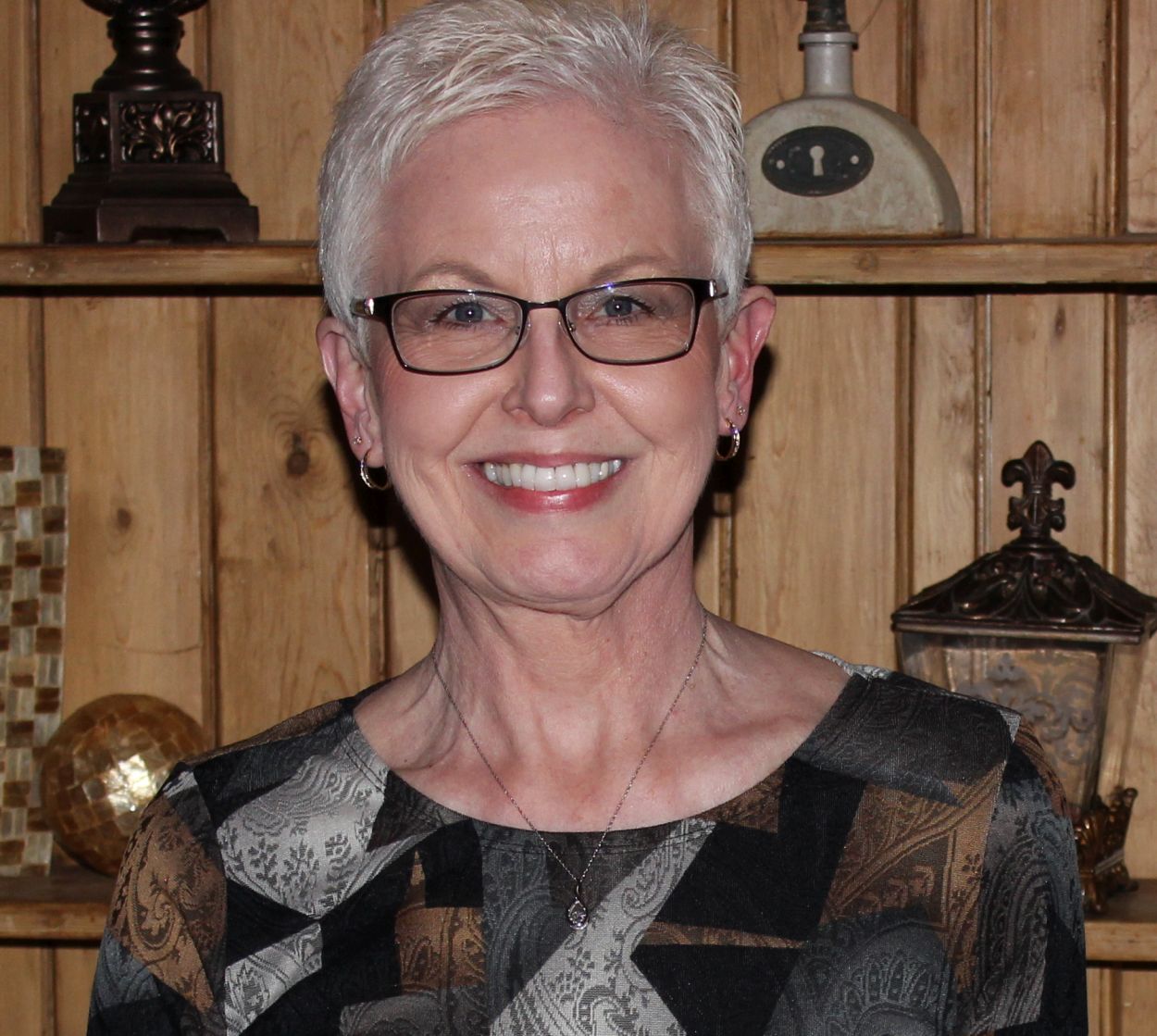
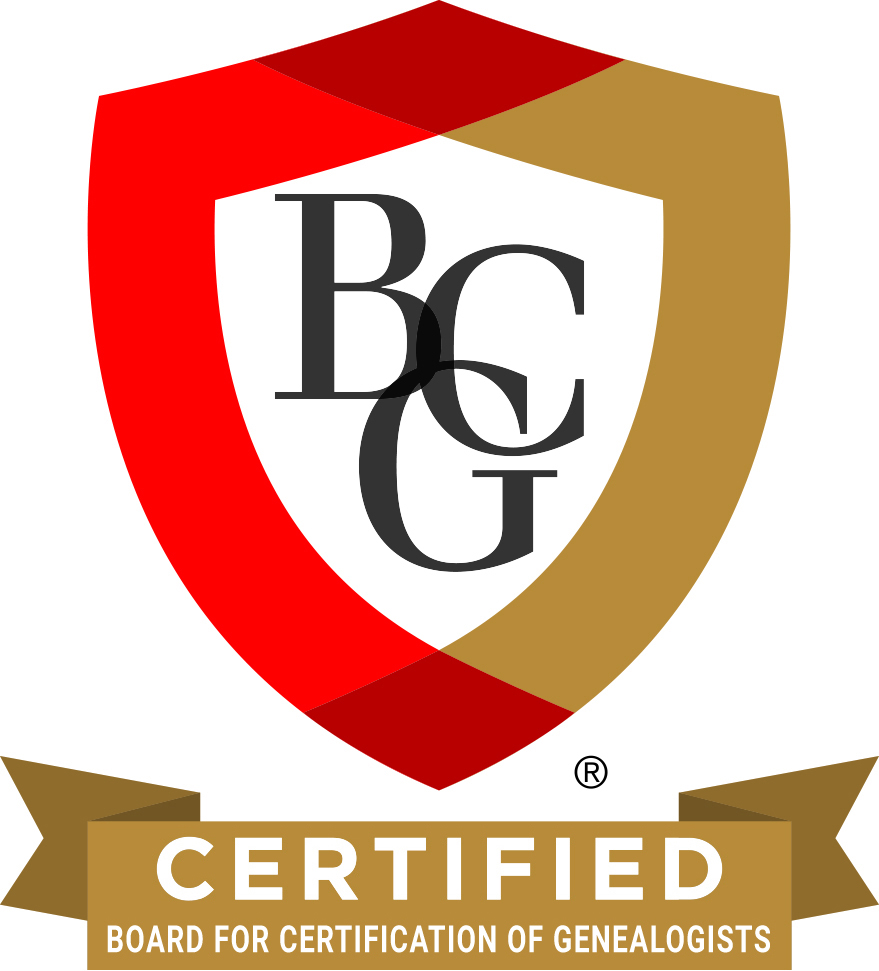
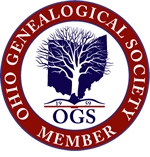

Such a number of connections! I knew Rosella. She was our music teacher at Willshire. My husband worked with her…
How interesting and what a find! I am happy that I could provide a little insight into Dr. Hagerman. Thanks…
I was looking at a September 27 entry by the Van Wert Historical Society that referenced a 2017 blog of…
Karen, Nice history. I just purchased a cdv of Geo. R. Hagerman as a medical student in 1880. See eBay…
I think it very well could be. To my knowledge, there was only one Adam Kable in that area. Adam…